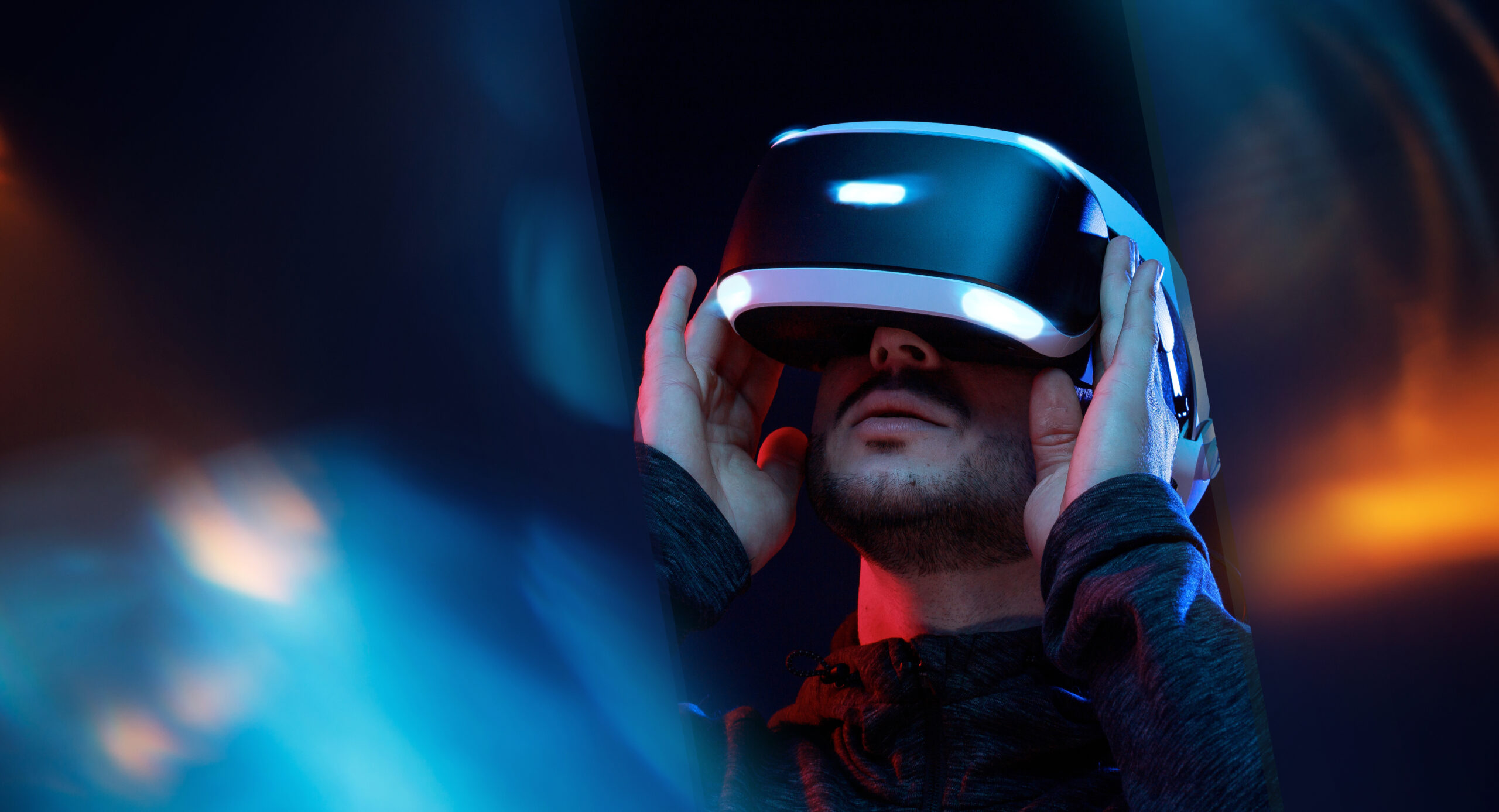Exploring the Impact of Virtual Reality on Digital Advertising Trends

Virtual Reality (VR) seems to be following a familiar trajectory in tech adoption. Like cloud computing, 5G mobile and the stand-out example in recent times, AI, VR has spent a long time being hyped as the next big thing. So long, in fact, that people start to wonder if all the hype was so much hot air.
But as we’ve seen with AI to spectacular effect in the past couple of years, a slow burn doesn’t rule out an emerging technology from becoming a genuine game-changer. And while it’s unlikely to hit the heights AI has, there are signs that VR could be on the cusp of fulfilling its promise.
In 2023, VR was characterised as a high-end niche market, with the high cost of headsets and limited choice highlighted as factors that were keeping adoption rates relatively low. But in 2024, a breakthrough moment came when Meta released the Quest 3S – if you discount the rather gimmicky and functionally limited Google Cardboard, the first affordably priced VR headset to hit the market. This is being widely credited with a rapid spike in consumer interest in VR, with the global headset market forecast to grow from $16m in 2024 to $18m in 2025.
From laptops to tablets to smartphones, past examples tell us that, once cost and capabilities align, it doesn’t take long for adoption to snowball. And this is where the marketing industry needs to be on its toes. Rapid acceleration in VR adoption will create a major new route to reaching audiences, and another rush for brands to stake a claim. Digitally savvy VR users will be ready and waiting for brands to use the new technology. Indeed, they’ll be expecting it.
As well as there being a strong element of meet-them-where-they-play about this, there are also some inherent benefits VR technology can bring to marketing, and particularly to the world of advertising. In this article, we delve into the potential impact VR can have on digital advertising and marketing at large, highlighting its benefits, challenges and future prospects.
Making Digital Experiences Immersive
For all the obvious benefits of digitisation in marketing, from reach to scalability to agile targeting and personalisation, it’s always had one obvious drawback. Compared to in-person, physical, multisensory experiences, even the most skillfully crafted on-screen content struggles to recreate the same levels of immersion and emotional engagement.
Digital content lends itself best to passive consumption, although marketers have put a lot of time and effort into finding creative ways around that. But the truth remains, the most engaging experiences, the ones that live longest in the memory and lock in positive associations, are those that come when audiences feel ‘in’ the moment. Not observing at a distance via an intervening screen.
This is why so many marketers are already excited by the possibilities of VR. By simulating three-dimensional environments, VR is all about creating immersive lifelike experiences in a digital form. This is tailor-made for digital marketers seeking ways to make their brand experiences more active, participatory and emotionally resonant. With VR, you can literally put your audience in the middle of the experience.
Breathing New Life into Advertising
This is all especially appealing to digital advertisers, who have fought an attritional battle of diminishing returns over the past couple of decades. Advertising is still a cornerstone of marketing – the fact that half a trillion dollars is spent on it every year tells you as much.
But that hasn’t stopped ROIs from declining in tandem with consumer trust. Just 39% of people say they trust online advertising. The question is, how much is this decline in trust down to advertising formats becoming stale? How much is it down to people getting irritated by pop-ups and targeted ads interfering with their online experience?
VR gives advertisers an opportunity for a reset. It lets them break out of the well-rehearsed routines that consumers have become wise to and embrace innovative approaches. Perhaps most importantly, it allows them to embrace new formats tailor-made for driving enjoyment and emotional engagement. This is perfect for smashing through the cynicism that has built up around advertising.
VR opens the door to a world where customers aren’t just invited to click on a static ad. They can be shown around a virtual showroom or given interactive product demonstrations. Automotive companies are already using VR to offer virtual test drives. Retailers like IKEA have pioneered the development of immersive virtual showrooms that bridge the gap between ecommerce and in-store experiences, and allow customers to visualise goods in 3D realistic environments.
These examples show how VR can move advertising away from more basic look-at-me and hard-sell tactics into the realm of creating unique, captivating brand experiences – the holy grail of marketing across the board these days.
Putting Consumers at the Heart of the Story
Every marketer knows the importance of good storytelling in building engagement and lasting connections with audiences. VR’s immersive nature can enhance the power of storytelling for brands. For one, VR requires active participation. Audiences quite literally step into the story, whether that’s a virtual test drive or exploring a virtual showroom or anything else, meaning they are at the centre of the narrative. And when brand stories and experiences are crafted around the customer, that’s when engagement really takes off.
A great example of this at work is an award-winning VR campaign from shoe brand Toms, which used the immersive technology to ‘transport’ audiences to a village in Columbia to see the impact of a charitable campaign that donated a pair of shoes for every pair bought. Again, in a very literal sense it put people at the heart of the story, allowing them to see in a direct and immersive way the impact buying shoes from Toms was having, and therefore creating a strong emotional connection to the brand’s mission.
The Future of VR in Digital Advertising
Despite its advantages, integrating VR into digital advertising comes with challenges. These include high production/programming costs. Getting a return on these high input costs directly correlates to the size of the audience you can reach, which means the number of people who own and use a VR headset.
While we can expect VR adoption to grow as costs decline and choice increases, another route to extending the reach of ‘virtualised’ marketing is by loosening the dependence on specialist VR devices.
To this end, while Meta has been a flag carrier for the evolution of VR technology (and is now the world’s biggest VR headset vendor), its ambitions to lead the way in establishing a connected virtual ‘metaverse’ have seen it also move to embrace Augmented (AR) and Mixed Reality (MR) technologies. Rather than full digital immersion, AR and MR blend the digital and physical realms and have the advantage of being accessible via any device with a screen and camera, such as a smartphone.
On the other side of the coin, with its enormous social media empire, Meta is also a major player in the world of digital advertising. Facebook and Instagram and guaranteed to be prime sites for experimentation in the use of extended reality (XR) technologies in advertising over the coming years.
As a London-based creative agency and digital marketing company, we take a keen interest in how emerging technologies shape the marketing landscape and make a point of keeping on top of the latest trends so we can help clients make informed decisions about the right trends to follow. For more information about all things VR, XR, Meta advertising and digital advertising in general, get in touch with our team for an informal chat.
Frequently Asked Questions
How is Virtual Reality (VR) impacting digital advertising?
VR is transforming digital advertising by enabling immersive and interactive experiences. Unlike traditional ads, VR allows brands to create virtual environments where consumers can engage with products, services, and stories in a more impactful and memorable way.
How can VR make digital marketing more immersive?
VR overcomes the limitations of traditional digital content by placing consumers inside a 3D, interactive experience rather than passively viewing content on a screen. This deep level of immersion increases emotional engagement and brand recall.
How does VR improve consumer trust in advertising?
Traditional digital ads often suffer from low trust due to intrusive pop-ups and banner fatigue. VR offers an alternative by making ads less about selling and more about engaging, entertaining, and educating consumers, leading to better relationships and trust.
How does VR compare to Augmented Reality (AR) and Mixed Reality (MR) in advertising?
- VR creates fully immersive digital environments requiring a headset.
- AR overlays digital elements onto the real world, accessible through smartphones and tablets.
- MR blends VR and AR, allowing interaction between digital and physical spaces.
Brands can choose the right format based on budget, audience, and campaign objectives.
How will the rise of VR impact social media advertising?
With Meta leading the charge in both VR and digital advertising, we can expect new ad formats and branded experiences within VR spaces like Meta’s Horizon Worlds and Instagram’s XR features. Brands should stay informed on emerging opportunities in social media VR marketing.
How can our business get started with VR advertising?
If you’re considering VR for your brand, start by exploring cost-effective ways to integrate immersive experiences. Whether it’s creating interactive 3D product demos, virtual showrooms, or AR filters, working with a digital marketing agency experienced in emerging tech can help you make the right move.
For more insights on VR, XR, and digital advertising trends, contact our team for a consultation.
Services you may be interested in

Web Development Services
We specialise in crafting bespoke, user-experience (UX) optimised sites. We are a dedicated team of web designers committed to elevating your brand to new heights

Web Hosting Services
As a leading digital marketing agency, we are uniquely positioned to offer unparalleled web hosting that stand out in the competitive UK market.
